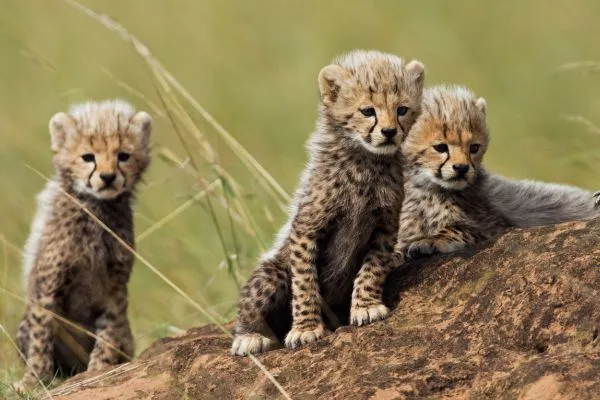The long and short of it is... there's not much difference between hair and fur. Read on to find out more.

Fur vs hair
Hair is an umbrella term for a range of essentially similar structures – fur, wool, whiskers, bristles and lashes – growing from the skin of mammals. That said, fur is widely understood to be the particularly thick hair that covers much of the body.
What is hair made of?
Hair is a defining characteristic of mammals. Like the scales of reptiles and the feathers of birds, it’s made of a tough protein called keratin. Indeed, feathers and hair are both thought to have evolved from the scales of our reptilian ancestors. The transition may well have accompanied the development of warm-bloodedness. By trapping a layer of air against the skin, hair helps an animal maintain a constant body temperature by buffering it against external cold or heat.
Little surprise that fur is thickest where the need for insulation is greatest. And it doesn’t come any thicker than in sea otters, the hairiest animal in the world. With up to 160,000 individual hairs per square centimetre, it prevents cold water even reaching the skin.
And fur is not always soft and fluffy. Hedgehog spines and porcupine quills are toughened body hairs that are wielded as highly effective defensive weapons.
What is the difference between dog hair and dog fur?

When it comes to dogs, there are some technical differences between the two terms:
- Dog hair tends to be smoother and silkier, while dog fur can be more coarse or fluffy.
- Dog hair typically grows continuously and has a longer growth cycle, whereas dog fur grows to a certain length and then falls out or sheds. Dogs with hair may require regular trimming, while dogs with fur may shed seasonally.
- Hair is often associated with certain breeds that have a single coat, such as Poodles or Afghan Hounds. This type of coat may be hypoallergenic and shed less.
- Fur, on the other hand, is more common in double-coated breeds like German Shepherds or Huskies, which have a dense undercoat for insulation and a longer outer coat for protection.
Find out more
Check out our expert answers to other fascinating 'what's the difference?' questions, including rabbit vs hare, red vs grey squirrel and lizard vs newt.